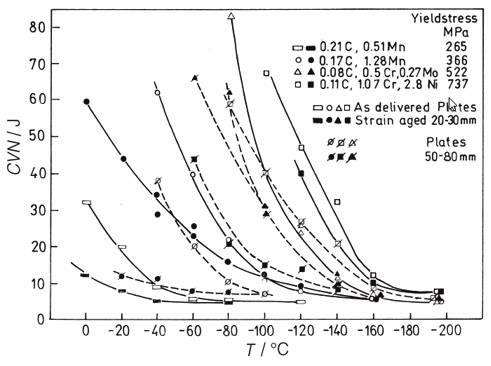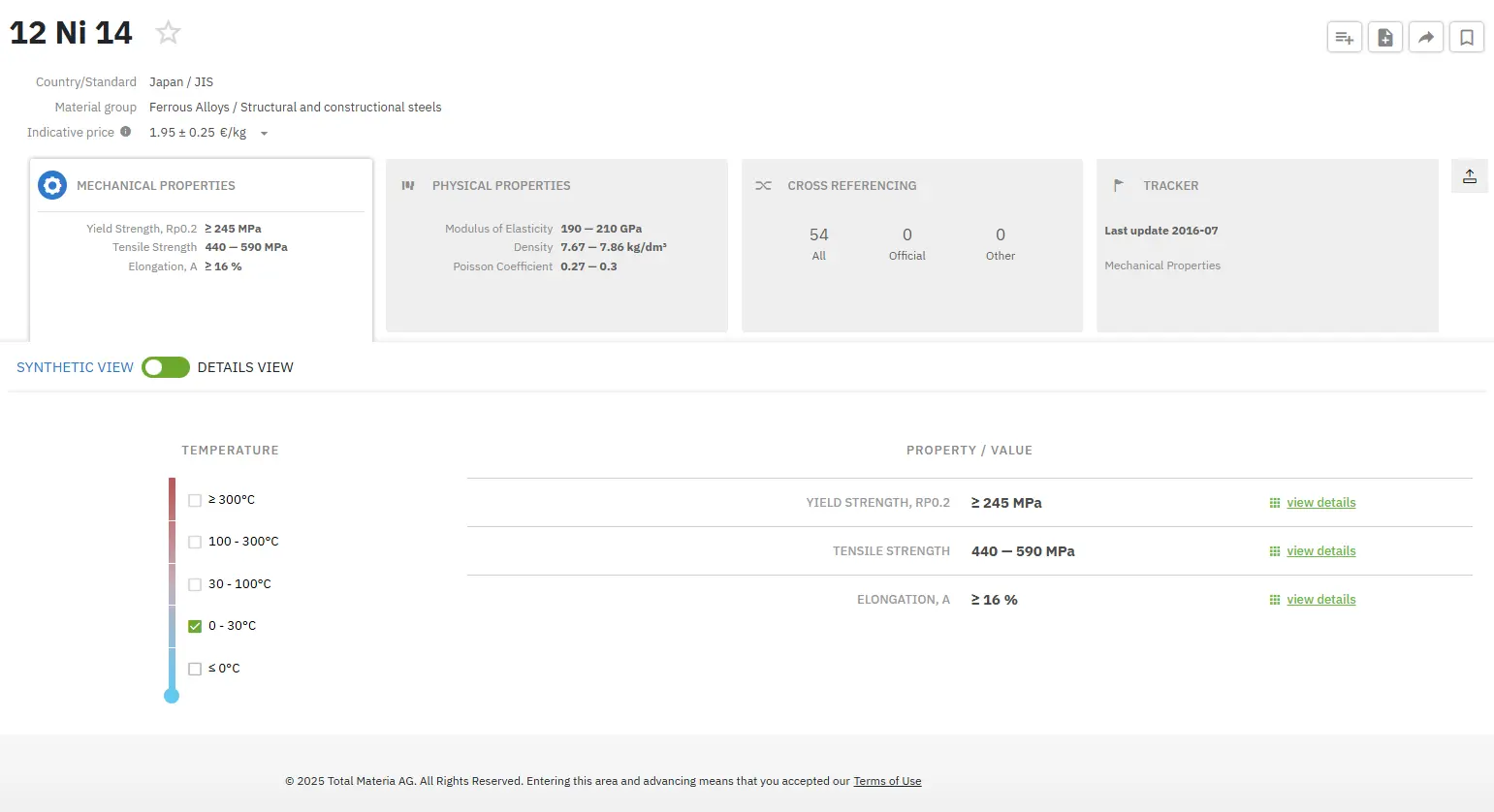Charpy Impact Steel Testing: Part Two
Abstract
This article examines the Charpy V-notch (CVN) impact test, a standardized method that measures the energy absorbed during material fracture using a pendulum. The relationship between temperature and brittle fracture is explored, along with correlations between CVN impact energy values and fracture toughness (KIC). The study reviews how these correlations apply to structural steels, particularly in wet welding conditions at various sea depths. The research demonstrates that both CVN impact energy and KIC values decrease with increasing sea depth due to welding discontinuities, highlighting the importance of appropriate correlation equations for accurate fracture mechanics assessment.
Introduction to Charpy Impact Testing
The Charpy V-notch test is widely used to determine how temperature affects the susceptibility of structural steels to brittle fracture. In this standardized test, notched specimens are subjected to the impact of a hammer with a kinetic energy of 300 J. The fracturing process occurs in ductile, mixed, or brittle modes, each consuming significantly different amounts of energy.
In the upper shelf CVN ductile region, structural steels typically consume 150 J or more during fracture, with specific values varying between different steel types. Conversely, brittle cleavage fracture below the lower shelf threshold consumes less than 10 J and remains relatively similar across steels with different microstructures, grain sizes, yield stresses, and conditions (as delivered or strain aged), as illustrated in Figure 1.

Figure 1: Charpy notch toughness for structural steels with different microstructure and yield stress in the range of transition temperature
Temperature, Time, and Energy Relationships in Fracture Testing
The fracture time varies considerably depending on the fracturing energy. For instance, it takes approximately 11 ms with an energy of 250 J but only 1 ms with an energy below 10 J. The volume of plastically deformed metal also differs significantly—several hundreds of cubic millimeters in the ductile range but negligible in the brittle range.
Approximately 90% of the energy consumed during plastic deformation and fracturing dissipates as heat. Consequently, fracturing in the upper shelf and transition range occurs above the nominal testing temperature. In the brittle range, however, virtually no plastic deformation heat is generated, so fracturing occurs at the nominal testing temperature. This means that the temperature used in graphical representations of CVN toughness versus testing temperature is not the actual fracturing temperature throughout the entire testing interval. The time and volume distribution of deformation and fracturing temperature further complicate our understanding of the Charpy ductile fracturing mechanism.
Fracture Toughness and Its Correlation with Charpy Testing
For critical structure assessment, various fracture mechanical parameters are used to describe a component's resistance to flaws. One frequently applied parameter is fracture toughness (KIC).
It is widely recognized that Charpy CVN impact energy values can be converted to KIC using established KIC-CVN correlations. Plane-strain fracture toughness (KIC) represents a critical material property for predicting and preventing fracture and for damage tolerance assessment of brittle materials. In linear elastic fracture mechanics (LEFM), KIC indicates the stress intensity factor at the crack tip when the strain in the body remains elastic.
While the ASTM E-399 standard is used to obtain KIC values in plane-strain for the displacement mode of opening cracking, preparing such specimens is not always feasible when the analyzed material lacks proper dimensions. Even at room temperature, standard tests for KIC are often difficult, time-consuming, and costly.
Applications in Wet Welding Environments
G. Terán Méndez and colleagues conducted a study to estimate the fracture toughness (KIC) from CVN data collected by different researchers who employed wet welding in A36 steel. They compared these values with CVN measurements obtained in their own study.
In their methodology, they constructed T-welded connections using A36 steel and E6013 electrodes. Rectangular grinding was performed at the weld toe with depths of 6 mm and 10 mm. This grinding was filled with wet welding simulating seawater at depths of 50, 70, and 100 m. Standard Charpy specimens were then extracted to obtain energy values. Additionally, the researchers compiled Charpy CVN values from previous studies using A36 steel and E6013 electrodes with wet welding. Finally, they presented KIC-CVN correlations to measure fracture toughness.
Conclusions and Implications
The researchers concluded that both CVN impact energy and KIC values decrease as sea depth increases. This decline is attributed to various discontinuities in wet welding, including porosity, slag inclusion, non-metallic inclusion, and cracking.
Although existing KIC-CVN correlation equations were not specifically designed for wet welding applications, the KIC values obtained using Barsom's method were considered the closest approximation to those obtained with ASTM E369 standard specimens. This is because they utilize values from across all zones of the absorbed energy curve and incorporate the material's yield stress.
The study highlights the need to develop more comprehensive correlation equations that factor in additional mechanical properties such as yield strength (σYS), ultimate tensile strength (σUTS), hardness (HRC), and microstructure. Importantly, there is no single fracture toughness value for steels that applies across all temperatures, Charpy CVN data points, and water depths.
A reasonably accurate KIC-CVN correlation can serve as a valuable tool in linear elastic fracture mechanics (LEFM). CVN testing offers advantages over KIC testing in terms of experimental simplicity, speed, and cost-effectiveness. Traditional equations for estimating KIC data remain useful because KIC represents a mechanical material property that can be transferred from a test specimen to a full structure.
Read more
Find Instantly Precise Material Properties!
Total Materia Horizon contains mechanical and physical properties for hundreds of thousands of materials, for different temperatures, conditions and heat treatments, and much more.

Get a FREE test account at Total Materia Horizon and join a community of over 500,000 users from more than 120 countries.